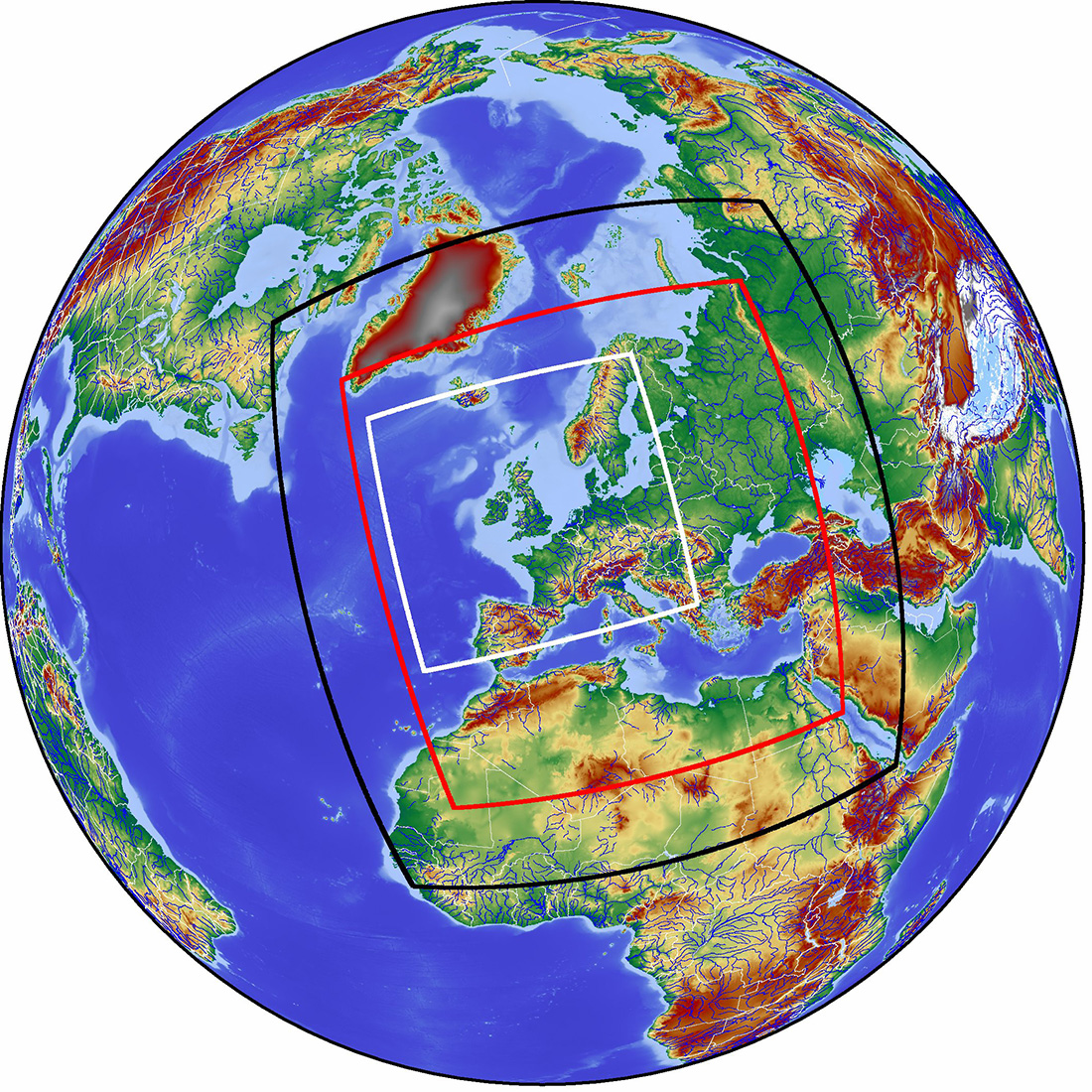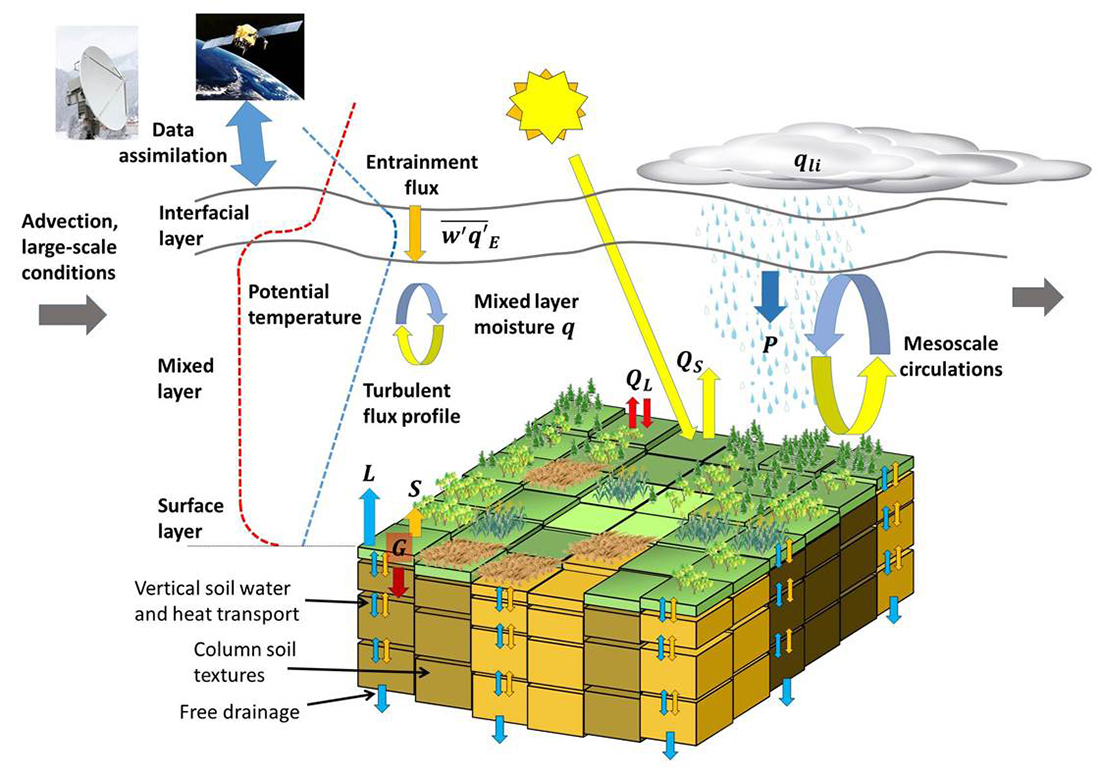ENVIRONMENT AND ENERGY
High-Resolution Climate Predictions and Short-Range Forecasts to Improve the Process Understanding and the Representation of Land-Surface Interactions in the WRF Model in Southwest Germany (WRFCLIM)
Principal Investigator:
Kirsten Warrach-Sagi
Affiliation:
Institute of Physics and Meteorology, University of Hohenheim, Stuttgart (Germany)
Local Project ID:
WFRCLIM
HPC Platform used:
Hermit of HLRS
Date published:
Scientists from the University of Hohenheim (Stuttgart/Germany) aim to investigate and to improve the performance of regional climate simulations in Europe with the Weather Research and Forecast (WRF) model. The model is operated from 12 km down to the convection permitting scale of 3 km, for advancing process understanding.
Anthropogenic greenhouse gases such as CO2 will bring about significant changes in the earth’s climate with substantial social, economic, and environmental consequences. There will be a multitude of impacts on regional energy and water cycles; and of particular concern are changes in the intensity and frequency of extreme events such as droughts or extreme precipitation. The impacts will differ between regions, therefore end users like federal agencies, hydrologists, and farmers require high-resolution climate information.
The resolution of most global climate simulations is more than 100 km and therefore too coarse for almost all end users and decision makers. Downscaling of global projections, applying high-resolution climate models is essential for achieving results at regional scales. An improved simulation of the spatial distribution of temperature and precipitation including wet-day frequencies, dry periods, and extremes can be expected.

Figure 1: Domain configurations selected for the climate projections. The black frame shows the model domain which is simulated at 12 km resolution, the red frame shows the evaluation domain and the white frame shows the convection permitting domain.
Copyright: Universität HohenheimWRFCLIM – honored with the Golden Spike Award 2013 – aims to investigate and to improve the performance of regional climate simulations in Europe (Fig. 1) with the Weather Research and Forecast (WRF) model. The model is operated from 12 km down to the convection permitting scale of 3 km, for advancing process understanding (e.g. Warrach-Sagi et al. 2013a, Greve et al. 2013, Vautard et al., 2013, Kotlarski et al., 2014). Special attention is paid to soil-vegetation-atmosphere feedback processes (Fig. 2), which are essential for cloud formation and precipitation. WRF generally simulates the seasonal precipitation and temperature in central Europe relatively well, namely in Germany. For further case studies within WRFCLIM see e.g. Warrach-Sagi et al. (2013 b, c). In spite of the overall success in simulation, systematic errors remain in low and high mountain ranges, which need to be corrected to produce acceptable simulations for most applications. Currently, regional climate projections are performed for Europe until 2100.
Large-scale, high-resolution climate simulations like WRFCLIM are an example of applications which need to be executed on the largest and fastest available computing systems like the high-performance computing systems at HLRS. For the 12-km resolution, the model domain covers 13 million grid cells whose physics and dynamics are simulated with a 1 minute time step. Other computer clusters have neither the required cores-h (computing time) to finish such climate simulations in a reasonable time nor the storage capacity.

Figure 2: Soil-vegetation-atmosphere feedback processes simulated and studied within WRFCLIM. QS and QL denote shortwave and longwave radiation fluxes, L, S and G are the latent, sensible and ground heat fluxes at the land surface, P is precipitation and qli is the liquid water and ice content of clouds.
Copyright: Universität HohenheimReferences:
° Greve et al., 2013, doi:10.1175/JAMC-D-12-0239.1
° Kotlarski et al., 2014, doi:10.5194/gmd-7-1297-2014
° Vautard et al., 2013, doi:10.1007/s00382-013-1714-z
° Warrach-Sagi et al., 2013a, doi:10.1007/s00382-013-1727-7.
° Warrach-Sagi et al., 2013b, In: "High Performance Computing in Science and Engineering 13", Eds: Nagel et al.
° Warrach-Sagi et al., 2013c, In: "Sustained Simulation Performance 2013", Eds: Resch et al.
° Wulfmeyer, V., K. Warrach-Sagi, T. Schwitalla, H.-S. Bauer, and J. Milovac, 2014: Towards seamless mesoscale prediction of the land system for Europe. The World Weather Ope Science Conference, Montreal, Canada, August 16-21, 2014.
Scientific contact:
Dr. Kirsten Warrach-Sagi
Institute of Physics and Meteorology
University of Hohenheim
Garbenstr. 30, D-70599 Stuttgart/Germany
e-mail: kirsten.warrach-sagi[at]uni-hohenheim.de